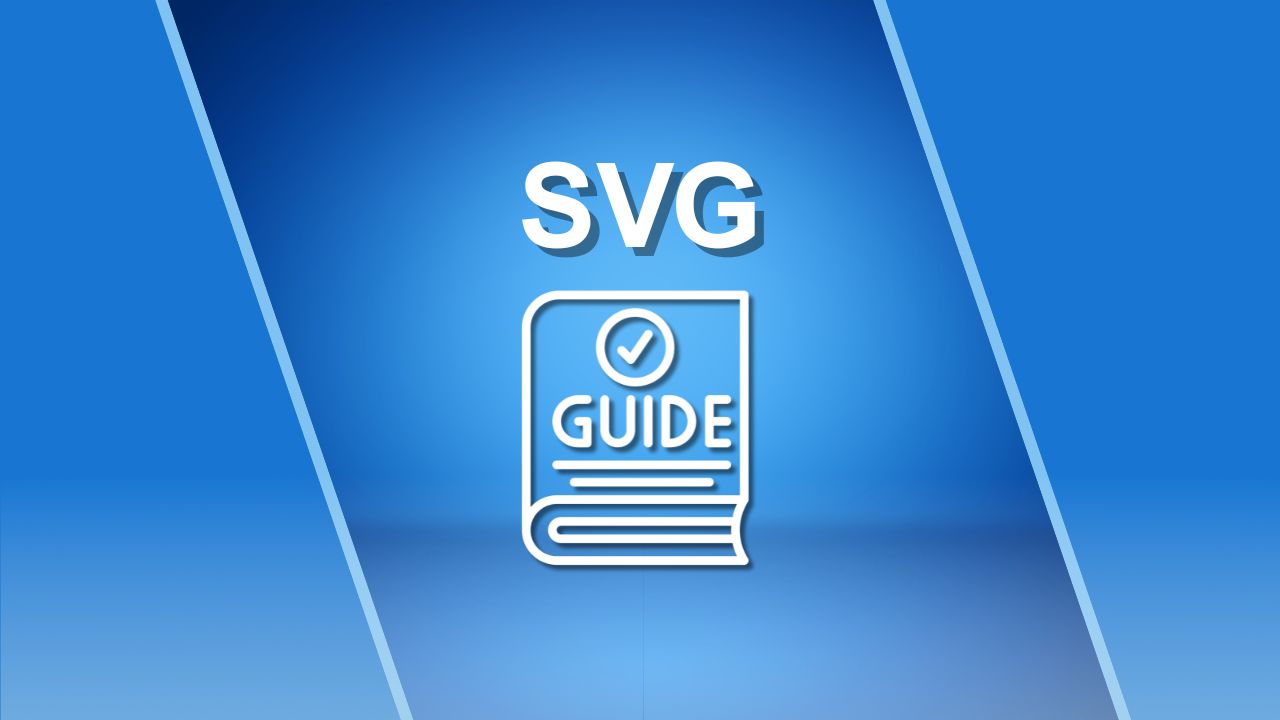
SVG has become one of the most popular file formats in modern web design and digital content creation. Unlike raster formats such as JPEG or PNG, SVG files are based on XML code and describe images using shapes, paths, and mathematical expressions. This vector-based structure makes SVG versatile, lightweight, and scalable without losing quality. In today's digital-first world, where speed, responsiveness, and visual clarity are essential, understanding the SVG format can give designers, developers, and marketers a competitive edge.
What Is SVG and How Does It Work?
SVG stands for Scalable Vector Graphics, a W3C standard developed in 1999. Instead of storing pixel data, SVG represents images using vector graphics—lines, curves, polygons, and text described in XML. This makes them resolution-independent and infinitely scalable.
For example, a company logo saved as SVG can be displayed on a business card, a website, or a massive billboard without distortion. Because the format is code-based, SVGs are also editable with text editors and can be manipulated with CSS and JavaScript.
Key Advantages of SVG Format
1. Infinite Scalability Without Quality Loss
The primary benefit of SVG is its ability to scale seamlessly. Whether zoomed in or out, SVG images remain crisp and clear, making them perfect for responsive web design and high-resolution displays.
2. Lightweight File Size
SVGs are typically smaller than bitmap formats because they store instructions rather than pixel data. This leads to faster website load times, better user experience, and improved SEO rankings.
3. Search Engine Friendly
Because SVG is based on XML, search engines can index the content inside SVG files. Texts, descriptions, and metadata within the file enhance accessibility and can contribute to better search visibility.
4. Easy to Edit and Animate
SVG files can be styled and animated with CSS, manipulated via JavaScript, or edited directly in code. Designers can add hover effects, transitions, and interactive graphics, creating more engaging user experiences.
5. Cross-Platform Compatibility
SVGs are supported by all modern browsers and devices, ensuring consistent rendering across platforms. They integrate smoothly with HTML, CSS, and JavaScript in web projects.
Common Use Cases of SVG
Logos and Branding
SVG is the go-to format for logos because it ensures brand assets look sharp at any size. Businesses benefit from consistent branding across websites, apps, and print materials.
Icons and UI Elements
SVGs are widely used in user interfaces, replacing PNG or JPG icons. They load quickly, adapt to various screen sizes, and can be styled dynamically with CSS.
Web Graphics and Infographics
Charts, diagrams, and infographics saved as SVG remain interactive and sharp regardless of scale. This is crucial for data visualization on websites.
Illustrations and Artwork
Artists and illustrators often use SVG for vector-based drawings. Unlike raster images, SVG illustrations can be reused across multiple projects without quality degradation.
Interactive Animations
SVG's ability to integrate with JavaScript makes it a powerful tool for creating animations, hover effects, and interactive storytelling elements in web design.
File Conversion: How to Convert Images to SVG?
While SVG offers many advantages, not all graphics are originally created in this format. Fortunately, file conversion tools make it easy to transform existing files such as PNG, JPG, or GIF into SVG.
One of the most reliable solutions is Img2Go's SVG Converter. This online tool allows you to upload an image and convert it to SVG within seconds—no advanced design skills required.
Benefits of Using Img2Go to Convert Files to SVG:
- Ease of Use: Upload your file, choose optional settings, and download the converted version instantly.
- Wide File Support: Img2Go works with popular image formats like PNG, JPG, BMP, and GIF.
- Free and Online: No need to install software; everything happens in your browser.
- Preserves Quality: Your converted SVG maintains sharpness and can be scaled without pixelation.
- Accessible Anywhere: Whether on desktop, tablet, or mobile, Img2Go's tool ensures quick access.
This makes Img2Go an excellent option for designers, marketers, and business owners who want to repurpose existing graphics into flexible, scalable SVG files for websites, apps, or digital campaigns.
Best Practices for Using SVG
- Optimize SVG Files for Web Performance: While SVGs are lightweight, they may contain unnecessary code when exported from design software. Using certain tools can remove redundant metadata and reduce file size.
- Ensure Accessibility: Add descriptive titles, aria-labels, and metadata so that screen readers can interpret SVG content. Accessibility not only improves user experience but also enhances SEO.
- Use Inline SVG for Styling and Animation: Embedding SVG code directly into HTML allows for easier styling with CSS and better control of animations with JavaScript. This method also improves page rendering speed.
- Secure Your SVG Files: Since SVGs are code-based, they can potentially contain malicious scripts. Always sanitize SVG files before uploading them to websites to prevent security risks.
- Balance Between SVG and Other Formats: While SVG is excellent for logos, icons, and graphics, it may not be the best choice for complex photographs. For images requiring rich detail, raster formats like JPEG or WebP remain more suitable.
Future of SVG in Digital Design
As web performance and user experience continue to dominate digital strategies, SVG's role will only grow stronger. With increasing demand for mobile-friendly websites, high-DPI screens, and interactive content, SVG provides the perfect blend of scalability, performance, and accessibility.
The rise of progressive web apps, motion graphics, and interactive storytelling further cements SVG's importance. Businesses, designers, and developers that embrace SVG will gain a competitive advantage in delivering modern, engaging, and optimized digital experiences.
In Conclusion
SVG format is not just another image type—it's a powerful tool for modern digital design. From ensuring crystal-clear visuals to enabling fast-loading, interactive websites, SVG combines efficiency, flexibility, and SEO benefits. Whether designing a logo, creating infographics, or building a fully responsive website, SVG should be at the core of your strategy.
By adopting best practices and leveraging SVG's full potential, you can future-proof your digital assets and create superior online experiences that stand out from the competition.

